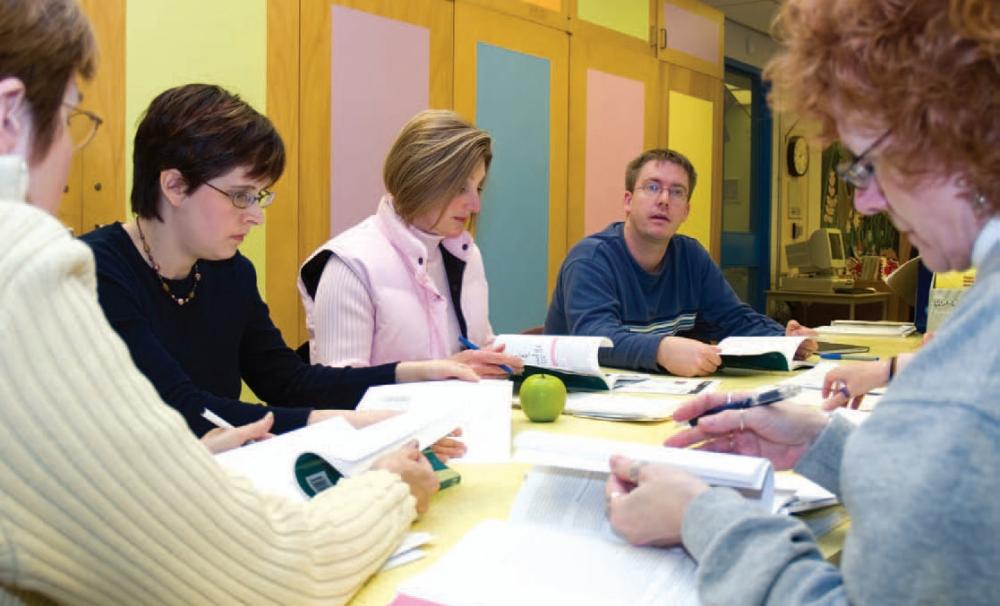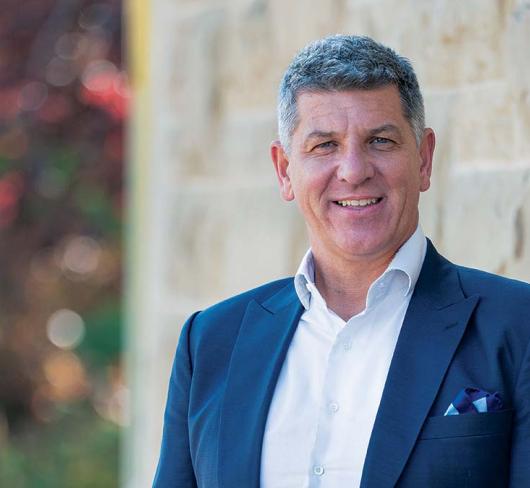
Professional Learning Communities Sharing Knowledge and Leadership: Increasing the SUM of Our Knowledge
For the past year a group of teachers in the District School Board of Niagara has been working together to increase their understanding of math and math teaching. Their venture has had unexpected spinoffs.
It is an exciting time for mathematics education in this province! Ministry initiatives have linked sound research with classroom practice. Teachers across the province have been provided with a variety of professional learning opportunities designed to explore the growing body of literature that highlights both the mathematics that teachers need to know and the instructional strategies that really lead to improvements in student achievement. All District School Board of Niagara (DSBN) teachers, kindergarten to grade 6, have participated in up to seven half-days of math inservice related to research-based instructional strategies and ministry support documents.
It was the vision of the DSBN math team to investigate models that would begin to bridge the gap between large-scale inservice opportunities and the practical implementation of researched-based instruction. We are a group of elementary teachers who accepted an offer to continue to study together in a less formal, more collaborative setting as part of a professional learning community. We are engaged in professional research-based reading, thinking, practising, and dialoguing – and we are loving it!
Through collaboration, we are learning about mathematics and mathematics teaching. Together we research, dialogue, plan, reflect, revise and, most importantly, analyze the impact of our actions on the children that we teach. Helping children understand, question, and see themselves as mathematicians was our goal and is becoming our passion. We met for the first time in February 2006 and began to develop a framework for our work. We decided to call our group the SUM Teachers.
SUM is an acronym for Supporting Understanding in Mathematics. Although our previous professional development experiences had been very congenial and we had developed a strong sense of community with the facilitators, our learning had been very much led by their agenda. The learning in the SUM teachers’ group was going to be generated and guided by our questions, by the kinds of learning we felt we needed. The knowledge we had gained through board-directed PD was a springboard for our own collaborative inquiry.
We decided to divide into three grade groupings: kindergarten to grade 1, grades 2 and 3, and grades 4 to 6. Meeting sometimes as a large group and sometimes in these smaller groups gave us the flexibility to meet the needs of our grade groupings while still capitalizing on the large group’s diversity and expertise. Our learning is facilitated by following the three elements of the SUM acronym:
SUPPORTING The facilitators from our board team help us focus our inquiry. They are able to suggest and seek out professional readings based on the most current research. By accessing various funding models (Ministry of Education, DSBN and ETFO), our facilitators provide classroom release time so that we can gather to co-plan, co-teach, and discuss what we are learning about teaching and learning. Sometimes the facilitators suggest modes of inquiry, such as Japanese Lesson Study, the Math Congresses of Cathy Fosnot, or the work of Marilyn Burns or John Van de Walle. But the facilitators’ involvement is not directive: they support our collaboratively developed plans. The facilitators have also deliberately fostered positive interdependence, so that we become supports for one another. The SUM group does not rely solely on the expertise of the facilitators; we also respect the expertise that each of us brings, whether it is teaching experience, mathematical understanding, knowledge of young children, or expertise related to students with special needs.
The most powerful aspect of the SUM experience has been the opportunity for meaningful collegial support. Through working together, and by observing and reflecting on our students as they learn, we are moving forward, instructionally and mathematically, in directions we could never have foreseen.
UNDERSTANDING Everything we do and talk about is focused on developing conceptual understanding and strengthening the interconnections of both student and teacher learning. We find ourselves asking deep questions: What is the role of context in our math lesson and how important was it in engaging children in the lesson? Did the writing distract from the math? How could we have planned better for the kinds of questions students asked, to prompt them to think more deeply about the interrelationships they saw? How does this lesson contribute to developing a particular mathematics concept or “Big Idea” throughout the Primary and Junior grades? We are all noticing a significant improve- ment in our students’ deeper understanding of the Big Ideas.
MATHEMATICS We understand that we need to learn more about mathematics itself and to have the kinds of conversations that build our own deep conceptual understanding. Sometimes we have trouble connecting to concepts, we may make errors in our thinking, and occasionally we need a buddy to explain his or her thinking to us yet again.
We have found – and research has supported our perception – that we are far more effective teachers when we really “get” the math, and when we know better how to guide students’ conversations toward understanding the Big Ideas. With this understanding, we know better how to
- differentiate instruction for learners who need more support
- identify questions that will lead students to think more deeply or differently about the mathematics
- challenge student thinking in developmentally appropriate ways
- make rich interconnections to other math strands and other subjects
- use communication in mathematics to richly and contextually support our literacy programs.
One of SUM’s most valuable spinoffs has been the excitement and staff room conversations that have led to other teachers approaching us with questions about math instruction. This interest has opened the door for informal coaching and co-teaching and fostered the initiation of school- based professional learning groups focused on mathematics.
Are we math nerds? Well, maybe. We prefer to think of ourselves as teachers who are excited about making strong gains in student understanding and achievement. We are willing to challenge the ways we have approached math instruction in the past. We are thrilled to engage as professionals in genuine, productive, student-centred, respectful collaborative learning. We are comfortable allowing mathematics and student understanding to drive the instruction in our classrooms. And that pretty much SUMs it up!
Pat Milot is a mathematics consultant (K to 6) and Glynnis Fleming is a special assignment teacher (Numeracy, K-6) with District School Board of Niagara.
